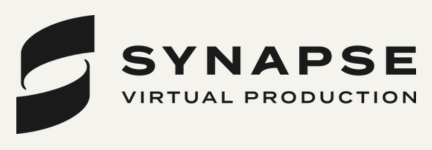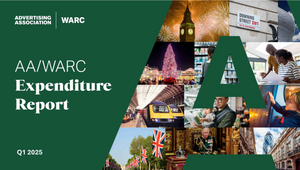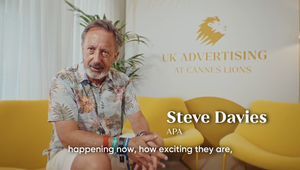
LEAD 2025: Growth, Trust, Value Top of the Agenda

Host, journalist, and broadcaster Samira Ahmed opened the LEAD 2025 summit by telling the audience that the next few hours will focus on bringing together politics and advertising, with the main themes of the summit focusing on growth and value. In a landscape of stagnant economic growth post Labour’s first year in government and continuously undermined standards of trust, politicians, agencies, and brands have to work harder than ever – and crucially together – to ensure mutual success. LBB’s Zhenya Tsenzharyk rounds up the main talking points from the day.
Government Keynote
Sir Chris Bryant, Labour’s Minister of State for Media, Tourism and Creative Industries, called advertising “the workhorse of the creative industry”, noting that 1 in 14 people in the UK work in the creative industry and stressing its importance to the wider creative industry ecosystem that Labour is keen to look after. Advertising’s contribution to the UK economy cannot be underestimated as we’re the second largest exporter of advertising services in the world with value expected to reach £43 billion this year. Chris stressed that he is keen to work together with advertising industry leaders on a strategy for the creative industry as it’s been marked crucial for growth by the government.
His commitment stressed education too and he stated a belief that you don’t get a good education unless you also get a creative education, which should be available to every child. STEAM, not STEM – adding the all-important ‘arts’ in with science, technology, engineering and maths. Reform of apprenticeships was also on his agenda and he promised that from August, the minimum apprenticeship length will be reduced to six months, allowing more young people to get the practical skills they need.
On the subject of AI, a topic many speakers would return to over the course of the summit, Chris said that a consultation is on the way to figure out how it pertains to copyright. IP is a key commodity for the UK, he said, must be protected to ensure fair remuneration.
Finally, Chris broached the subject of LHFs (less healthy foods) advertising which was limited by past governments, saying it is Labour’s priority to publish proportional guidance on the subject soon, developed with input from the advertising industry.
Shaping the UK’s Political Landscape
Discussions of the UK’s political landscape kicked off with happenings from across the pond after an explosive few weeks post Donal Trump’s second inauguration as US president brought with it an unprecedented level of executive orders and office appointments that raised more than a few eyebrows.
All of the panellists – Camilla Tominey, associate editor, The Telegraph; Kevin Schofield, political editor, HuffPost; Lara Spirit, political correspondent, The Times – agreed that the presidency is news cycle box office though they debated whether his words should be taken, and therefore, reported literally. Camilla pointed out that Trump seems to bring his ‘Art of the Deal’ strategy to every interaction, viewing everything like a negotiation, and questioned whether there was enough space for both his and Elon Musk’s egos as time goes on.
Turning to the subject of the UK, the panellists discussed the results of a poll that put Reform ahead of Labour and Conservatives and Camilla pointed out that its success is less about what Reform is good at but what Labour is failing at. To her, the turn towards reform represents the “F-it factor”, with people potentially wondering how much worse can it get if they do cast a vote for Nigel Farage and his party.
Kevin added that Labour’s current discussion of deregulation is impressing business and that all the opportunity available to Labour to change minds hinges on growth. Lara pointed out how growth looks like it’s coming in second, since no new oil and gas projects have yet been approved and that Kier Starmer needs to find better language on political trade offs to win people over. Ultimately, she found “no articulated growth philosophy” from our prime minister.
Advertising Pays: 2025 and Beyond
Dan Wilks, director of Credos, advertising’s think tank, started his talk by pointing out that the economic contribution of advertising to the UK’s economy is vast and extensive. Research has shown that for every £1 of ad spend by a large advertiser the ROI stands at £4.11. A similar methodology was applied to SMEs and while the ROI is less impressive it’s nevertheless there: £1.89 for every £1 spent. He explained that this was due to the “law of double jeopardy” whereby smaller businesses have fewer customers who are, in turn, less loyal; still, there is a positive return for all to be had.
Dan went on to show statistics that the advertising industry generates £174.1 billion GVA (gross value added) to the UK economy annually, making it an invaluable contributor to GDP.
Panelists Laura Fenton, chief executive, OMG UK; Catherine Kehoe, chief customer officer, Nationwide; and Kelly Williams, managing director, commercial, ITV, then discussed the value of advertising and why data is crucial to further growth.
Laura said that agencies’ jobs are very complex right now and a lot of investment is needed in data scientists and analysts to really quantify business impact. She added that improvements have to be made to capture how fragmented the landscape is and that good data has to power agency planning. She also suggested that perhaps agencies should be remunerated based on growth to “have skin in the game”.
For Catherine, data is the essential tool to achieve growth. More and more people are watching VOD, presenting a targeting challenge, though the new ad-funded streaming models present an opportunity to match high-quality content with ads. She said that the “fight for attention has never been fiercer,” highlighting that brands can no longer rely on a single TVC and giving the example of Nationwide’s ‘Nationfried’ campaign which took over a chicken shop in a student-favoured location, leading to a 30% increase in student market share activity.
Kelly said that investing in commercial outcomes is most important right now though it is hard to do as industry is more complex today than it has ever been and there’s not that much measurement of effectiveness. He told the audience that ITV has launched Auction Boost, a spot-to-search tool that can identify the positive impact of linear TV advertising (for all channels) on key paid search metrics. He then offered an oft repeated advertising mantra: “Being on TV is a multiplier effect, it uplifts all other activity.” On the subject of LHFs, Kelly was opposed to regulation, citing that children’s TV viewing numbers have dropped with no effect on obesity levels. He called for more clarity around the guidelines.
Priorities for CMOs in 2025
Pete Markey, chief marketing officer, Boots UK, and ISBA’s president said that cross-media measurement is a huge priority for the year ahead and needs more investment. He then noted that retail media is growing and we will see more integration with traditional media that’ll reshape the traditional media landscape.
Do Marketers Believe AI will Generate Real Growth?
Simon Valcarcel, marketing director, Virgin Media O2; Anneli Ritari-Stewart, head of digital marketing, Royal London; Phil Warfield, marketing director, Cadbury Equity; and Sameer Amin, global director of data driven marketing & media, Reckitt, sat down to discuss the subject on the tip of the industry’s tongue: AI. For Simon, AI is a tool not a strategy and is best applied to deal with specific issues. He noted that fraud is a massive issue in the UK and specifically for the telco industry, with calls most difficult to target. VCCP developed an ‘AI granny’ for O2 to derail scam phonecalls and for Simon this is an excellent example of how AI can be used to help and protect customers and trust in brands.
Simon said that AI will change, not take, people’s jobs and he wants to encourage a culture of AI use among his team. His advice is to treat AI implementation like learning to drive: theory first followed by practice before finally driving.
For Anneli, AI’s primary application at Royal London lies in driving operational efficiency. Before using AI, Royal London did a complete risk assessment and outlined crucial principles to follow which were developed with contributions from senior stakeholders. A training and learning culture is essential to develop around AI, according to her, and she advises the industry to lead by example: learn first and then apply learnings.
Phil has already seen how AI can dial up scale and personalisation to deliver value, like in the case of Cadbury’s 200th anniversary celebration which saw the brand create a gen AI-powered tool named ‘My Cadbury Era’, allowing customers to become part of the brand’s visual history. The campaign generated almost 80 thousand posters and a 50% opt in rate for data. Bias in datasets is a concern, Phil said, and every brand should have its own DEI point of view coupled with post-gen AI post production for control. His advice for successful AI integration? Get started now, keep the scope tight on inputs and outputs, and find a strategic partner to work with, like Cadbury has in VCCP.
For Sameer, AI is going to replace tasks, not jobs. Research at Reckitt found that 30% of junior marketers were spending time on business reporting – a task ripe for automation. Sameer did caution that while this has already had a positive effect on productivity, Reckitt is having to think carefully about graduates; typically they would be tasked with the work that AI is now doing but, since graduates are really useful to Reckitt, the company is focusing on new avenues for training.
What Next for Platform Brand Safety in the UK?
This was perhaps the panel with the highest stakes, in light of the announcement on January 7th that Meta was ending fact-checking on its social media platforms in the US. Speaking to the audience were Sarah Bakai, head of safety, privacy & integrity solutions marketing, Meta; Dyana Najdi, managing director, Google Advertising UKI; and Kris Boger, general manager, global business solutions, TikTok UK.
Sarah reminded the audience that Meta’s third-party fact-checking reversal was only applicable in the US before citing research, without a source, demonstrating that crowd-sourced fact-checking is as effective as third-party. Lifting restriction on some topics in mainstream discourse was needed, she said, as the previous guidelines were “too restrictive and censored harmless content” leading to some people getting put in ‘Facebook jail’, a colloquial term for user restriction on the platform. User safety will continue to be a priority for Meta and community standards are in place to do so coupled with content moderators around the world.
Brand safety is paramount for Meta and it will continue to work closely with regulators and within the parameters of the Online Safety Act. Brands’ safety tools include first and third party controls, inventory filter in three levels, and new control around content exclusions.
Dyana noted that Google is focused on creating age-appropriate experiences like in the instance of Family Link capabilities on YouTube and YouTube Kids which allows for high level of content control by parents. Training machine learning algorithms to detect and remove harmful content is likewise ongoing
Kris said that TikTok is an entertainment platform and there’s dedication to keeping it positive. Safety is inbuilt into the platform; “it’s a core principle,” Kris said. TikTok is proactive in identifying and taking down accounts by underage users. As transparency is very important to TikTok, it publishes how many accounts are taken down annually – last year the figure was 24 million.
Kris noted that all content on the platform has to pass through community guidelines and that TikTok is partnered with 20 fact checking organisations. Brands should also be comforted that TikTok has 18 content exclusion categories versus the industry standard 12.
Winning Back Trust in Advertising
Paul Bainsfair, director general, IPA, said: “Great ideas go a long way to establishing trust,” setting the agenda for the discussion with Miranda Hipwell, chief executive, adam&eveDDB; James Murphy, UK group chief executive, Ogilvy; and Rak Patel, chief commercial officer, Channel 4.
Miranda kicked off the discussion by saying that trust is being “eroded, hour by hour, with decades happening in a week” and cautioning that people will move away from brands they don’t trust. She added that today trust is the second biggest driver of effectiveness too. Trust stretches to client/agency relationships too as brands look for partners with integrity. For Miranda, it’s vital to uphold standards and commitments when others are dropping theirs, like on DEI and sustainability, to continue engendering trust with consumers.
James asked advertisers to have a sense of responsibility as they’re putting messages into people’s lives. He said that there needs to be a commitment to the truth, even some aspect of the truth is being amplified, calling out McCann’s slogan (Truth Well Told) as a great standard to aim for. He also said that advertising has “a responsibility to not pollute people’s lives” with needless content as this will render ads less welcome overall. Ads have to improve people’s lives, he insisted before quoting the designer William Morris: “Have nothing in your houses that you do not know to be useful or believe to be beautiful.” Trust is extremely valuable for brands, James insisted, and brands can be points of stability in periods of uncertainty. Meta’s decision to end fact-checking will have an effect on trust; “the swamp will gently fill up again,” James said.
Rak echoed James’ point about brands providing stability during uncertain times, saying that gen z actually trust brands more older cohorts though as a demographic they also struggle to know what the truth is. He pointed to research by Thinkbox, ‘Profit Ability 2: The new business case for advertising’, which shows that more trust equals more profit.
Growth and Value: Time for Action
Alessandra Bellini, the outgoing president of the Advertising Association, closed the summit with a few remarks that focused on talent: a talking point she also raised last year. She asked the industry to help ensure that in 10, 15, 20 years time, the seats in the auditorium would be filled by people from all around the country who got the chance to work in the creative and advertising industry, something that’s only possible through increased access and education: a task for the industry to tackle in collaboration with the government.















